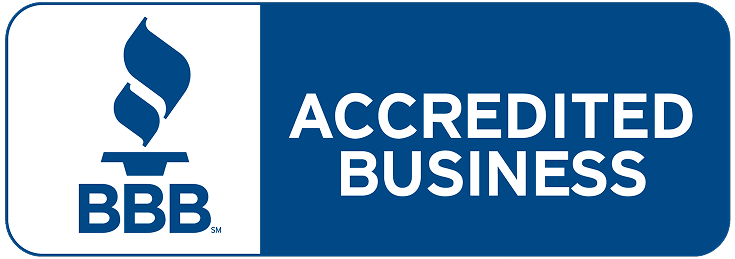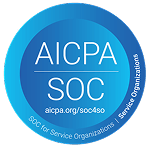Exploring postgraduate universities and funding options in Toronto
More international students are choosing to advance their education in Canada thanks to its safe, multicultural environment and reputation for a quality education.
According to the Canadian Bureau for International Education, more than 1 million international students were studying in Canada by the end of 2023. The province of Ontario, whose capital is Toronto, hosts the greatest percentage (52%) of study-abroad students.
If you’re thinking about completing a postgraduate study abroad program in Toronto, here’s what to know about the area’s top schools, what to expect with the admissions process, and study abroad advice for a successful experience.
University options in Toronto, Canada
There are many colleges and universities for international students to consider in Toronto, but these are the three most notable universities, depending on your postgraduate goals.
University of Toronto
The University of Toronto offers more than 200 postgraduate programs and is best known as a research powerhouse in fields like medicine and artificial intelligence.
The institution had nearly 6,000 enrolled international graduate students during the fall 2023-24 academic year. Students’ top three home countries were China, India and the United States.
Tuition costs for international graduate students range from CA$6,210 to CA$46,270 for the 2024-25 school year. This range, however, doesn’t include required non-academic fees.
York University
York University is a globally recognized research institution offering three campuses to choose from. Its postgraduate programs include health, engineering, business and more.
There are more than 9,600 international students across all academic levels studying abroad at York University in Toronto. The top home countries of its international student population include China, India and Iran.
Tuition and fees for full-time international students are up to CA$43,300, however, costs can vary depending on your graduate program and the academic year or term of your enrollment.
Toronto Metropolitan University
Formerly Ryerson University, the Toronto Metropolitan University offers graduate programs in engineering and architectural science, science, management and more.
More than 4,000 international students from over 140 countries choose to study abroad at the university during the fall 2023-24 year.
Full-time tuition and ancillary fees for postgraduate study abroad students vary, based on your chosen graduate program. For example, the students enrolled in the school’s Master of Applied Science Aerospace Engineering program can expect to pay CA$29,289 for the fall 2024-25 academic year, while those pursuing a master’s in data science and analytics can expect tuition and fees at CA$27,219.
Toronto’s postgraduate study abroad admissions checklist
Once you’ve identified a postgraduate program in Toronto that aligns with your academic and long-term career goals, you’ll need to prepare for Canadian admissions requirements.
-
- Academic standards: You must meet the GPA standards set by your university and postgraduate program. Ensure you’ve completed all prerequisites for enrollment and verified international equivalencies for your education in your home country.
- Language proficiency: Toronto colleges and universities require that you meet English language proficiency requirements. If you’re a non-native English speaker, be prepared to provide a copy of your International English Language Testing System (IELTS), Test of English as a Foreign Language (TOEFL) scores. TEF or TCF scores for French language proficiency are also commonly accepted by Toronto schools, but double check your university’s specific requirements.
- Application process: Take note of the school’s admissions application deadline and required documentation to include with your application. Also, be aware that there’s typically an application fee required.
- Personal statement and references: Write a compelling statement of intent, including why you want to attend the specific university. Postgraduate programs often have their own specific admissions requirements, which might include letters of reference.
In addition to meeting the university’s academic and language requirements, international students must satisfy Canadian immigration and financial verifications. This includes obtaining a Canada study permit.
MPOWER Financing has partnered with BorderPass to smooth the study permit application process. MPOWER Financing customers can access an exclusive BorderPass rate to receive study abroad advice from Canadian law professionals, as well as deadline reminders and status updates throughout the process.
Additionally, you must prove you have sufficient funds for tuition and to cover your cost of living while studying in the country.
Funding options for your postgraduate study-abroad education
Students can leverage their personal savings and monetary support from family back home. However, not all students and their families can do so. If you need additional funding sources to pay for your postgraduate education, there are a few options to consider.
Apply for scholarships and grants
Scholarships and grants are financial aid that doesn’t need to be repaid after leaving school. Each program has different eligibility and application requirements. You can find these aid opportunities through government-sponsored scholarships and university-funded scholarships and grants.
For example, the Canadian Bureau for International Education offers the Global Affairs Canada International Scholarships Program. The program’s Study in Canada Scholarships offer graduate recipients a scholarship award valued at CA$12,700 for five to six months of graduate-level study or research in the country.
If you were accepted into a Toronto-based university, learn about its available scholarship programs for international students. The University of Toronto, for example, offers a handful of scholarships, including the International Scholar Awards and In-Course Scholarships.
Search for on-campus jobs and assistantships
Finding part-time work while studying abroad can be challenging, but it’s possible. To get started, visit your campus’s international students office or career center to browse available part-time jobs on campus. These opportunities often have flexible work schedules that might better fit with your busy postgraduate workload.
Postgraduates can also look into teaching or research assistantships. In these roles, you’ll assist faculty and staff with various tasks and projects, depending on your appointment.
Explore an international student loan from MPOWER Financing
An international student loan from MPOWER Financing offers fixed-rate loans for up to US$100,000. This private funding can help you pay for academic costs as well as living expenses while studying in Toronto.
As an MPOWER customer, you don’t need a cosigner or collateral to secure the loan. Plus, you can access benefits, like an interest rate discount for signing up for autopay and services through our Path2Success program. See if you’re eligible for an MPOWER loan today.
Living in Toronto as a postgraduate study-abroad student
Living in a new country requires preparation and planning. It’s no different when pursuing a postgraduate study abroad program in Toronto. On top of paying for tuition, fees and mandatory supplies related to your curriculum, you’ll also need to budget in advance for certain expenses.
This includes on- or off-campus housing, utilities, meals, transportation and health care. Read more on how to successfully plan for life while studying in Toronto.
Having a smooth postgraduate study abroad experience in Toronto
Meeting Canada’s study permit requirement and your preferred university’s academic criteria will help your chances of starting your postgraduate study abroad journey. But seeing your academic goals through to graduation also involves securing adequate financing to support your education.
Learn how an MPOWER Financing international student loan can help you fund your postgraduate education.
Schools mentioned in this post do not endorse MPOWER’s loans and MPOWER is not affiliated with the schools noted in this message.

